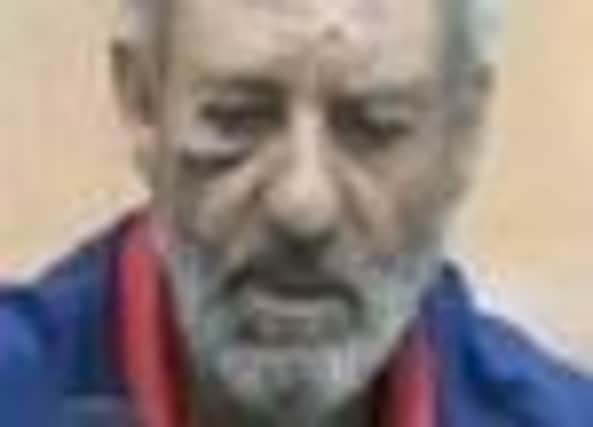Gaddafi believed people still loved him even as Tripoli fell


Gaddafi, his son Muatassim and an entourage of two dozen die-hard loyalists were largely cut off from the world while on the run, living in abandoned homes without TV, phones or electricity, using candles for light, said Mansour Dao, a member of the Gaddafi clan who was also his chief bodyguard.
Gaddafi would spend his time reading, jotting down notes or brewing tea on a coal stove, said Dao from a conference room in the revolutionary force’s headquarters in Misrata, which is now serving as his jail cell.
Advertisement
Hide AdAdvertisement
Hide Ad“He was not leading the battle,” Dao said of the former leader. “His sons did that. He did not plan anything or think about any plan.”
The uprising against Gaddafi erupted in February and quickly escalated into a civil war that formally ended Sunday, with a declaration of liberation by Libya’s new leaders. Gaddafi’s capture and death on Thursday, along with the fall of Sirte, the last regime stronghold, paved the way for that milestone.
Gaddafi was buried at dawn yesterday in an unmarked grave in a modest Islamic ceremony.
A nephew read a prayer for the dead before Gaddafi’s body – along with those of his son Muatassim and former defence minister Abu Bakr Younis – were handed over for burial, said Ibrahim Beitalmal, a spokesman for the military council.
The bodies had been kept in cold storage in Misrata for four days before being taken under cover of darkness to the burial site, which Mr Beitalmal said was “not far” from the city.
As part of the ceremony, the bodies were washed in line with Islamic tradition. Libya’s new leaders have said they would not reveal the location of the grave, fearing it could be vandalised or turned into a shrine for the former dictator’s supporters.
On the day of Gaddafi’s capture, a loyalist convoy, including an olive-green Toyota Landcruiser carrying the former Libyan leader and Dao, sped out of Sirte to try to escape.
But the convoy was hit by a Nato airstrike. Gaddafi and Dao were wounded and captured, and Gaddafi died in unclear circumstances later that day. Libya’s new rulers have agreed under mounting international pressure to open an investigation.
Advertisement
Hide AdAdvertisement
Hide AdDao said Gaddafi fled his residential compound in Tripoli in August, just before revolutionary forces swept into the city. After the capital’s fall, Dao said Gaddafi headed directly to Sirte, accompanied by Muatassim.
Gaddafi’s former heir apparent, Saif al-Islam, sought refuge in Bani Walid, another loyalist stronghold, Dao said.
The bodyguard joined the deposed leader in Sirte a week later, while Libya’s former intelligence chief, Abdullah al-Senoussi, shuttled between Sirte and the southern city of Sabha, the third remaining pro-Gaddafi bastion at the time.
Al-Senoussi and Saif al-Islam, both wanted by the International Criminal Court on war crimes charges, remain at large.
Gaddafi’s aides urged him to step aside and leave the country, but he refused, saying he wanted to die in the land of his ancestors, according to Dao.
“I feel sorry for him because he underestimated the situation,” Dao said. “He could have left and gotten out of the country and lived a happy life.”
Dao had worked for Gaddafi since 1980, including as chief of his personal security in the 1990s. Later, he assumed command of the so-called Peoples’ Guards, whose main aim was to hunt down Gaddafi’s opponents.
In Sirte, Gaddafi and his entourage switched hideouts about every four days, as the city was pounded by airstrikes. The group stayed within the confines of District 2, seeking shelter in homes residents had abandoned as they fled the fighting.
Advertisement
Hide AdAdvertisement
Hide Ad“We were scared of the airstrikes and shelling,” the bodyguard said, adding that he did not believe Gaddafi was afraid.
He said food was scarce in Sirte in the final days. Dao has previously said that audio messages Gaddafi sent from hiding were transmitted by Thuraya satellite phone.
In Sirte, loyalist fighters were led by Muatassim, who initially commanded about 350 men, Dao said. Many fled, and towards the end the fighting force diminished to about 150, he added. Gaddafi railed against the loss of power. “He was stressed, he was really angry, he was mad sometimes,” Dao said. “Mostly, he was just sad and angry.”
“He believed the Libyan people still loved him, even after we told him that Tripoli had been occupied.”